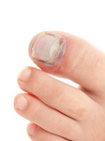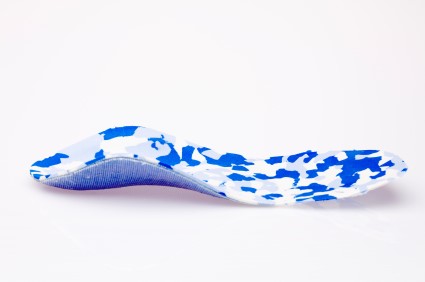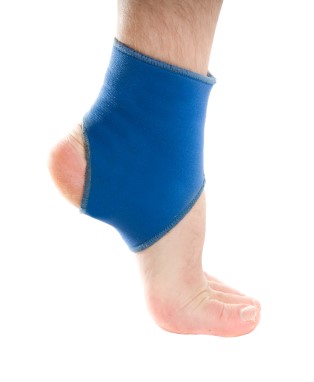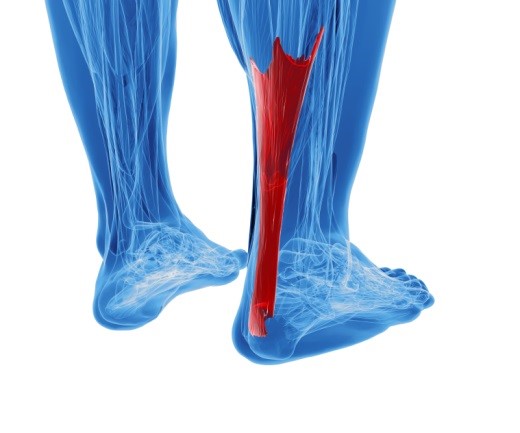Blog
Costs of Toenail Fungus Treatments
 While there are many remedies to toenail fungus, the costs and damages do tend to rack up. It is estimated that the cost of treating one nail can range from $2000 to $10 for pills that can cause severe damage to bodily functions. While the pill is often the go to option, many individuals are apprehensive to take it since it can cause liver damage and the test necessary to administer the drug cost up to $148. Jublia, a topical treatment that is both expensive and not guaranteed to work, is often used more due to its less damaging effects.
While there are many remedies to toenail fungus, the costs and damages do tend to rack up. It is estimated that the cost of treating one nail can range from $2000 to $10 for pills that can cause severe damage to bodily functions. While the pill is often the go to option, many individuals are apprehensive to take it since it can cause liver damage and the test necessary to administer the drug cost up to $148. Jublia, a topical treatment that is both expensive and not guaranteed to work, is often used more due to its less damaging effects.
While toenail fungus is troublesome to eradicate, doing so is not impossible. For more information about treatment, consult with Dr. Michael E. Newman of Pennsylvania. Our doctor will attend to all of your podiatric needs.
Toenail Fungus Treatment
Toenail fungus is a problem which affects many people and is hard to get rid of. Fortunately, there are several methods to go about treating toenail fungus.
Antibiotics & Treatments
Lamisil – is the most commonly effective treatment for toenail fungus. It is available as an antibiotic Terbinafine tablet and cream. Terbinafine is a chemical component which kills fungal growth on the body. Applying regular doses will gradually kill the fungal growth. It is important to keep the area clean and air free.
Talcum powder – applying powder on the feet and shoes helps keep the feet free of moisture and sweat.
Sandals or open toed shoes – wearing these will allow air movement and help keep feet dry. They also expose your feet to light, which fungus cannot tolerate. Socks with moisture wicking material also help as well
Alternative Treatments
There are always surgical procedures that are available for toenail fungus. Some people would like immediate quick removal of toenail fungus. Surgeons will be able to cut through and remove the growth using laser surgery. It is important not to try and remove it yourself. Once removed, your old shoes will need to be replaced to avoid reinfection.
If you have any questions please feel free to contact our offices located in Plymouth Meeting and Ambler, PA. We offer the newest diagnostic tools and technology to treat your foot and ankle needs.
Orthoses and Osteoarthritis Prevention
 Orthoses are great for managing conditions such as osteoarthritis. Osteoarthritis is thought to occur in “more than one-third of individuals age 35 and older.” Orthoses are customized footwear that can help reduce pain that patients experience from foot conditions such as osteoarthritis. Foot orthoses are suggested to help minimize joint compression by offering support for the person’s gait.
Orthoses are great for managing conditions such as osteoarthritis. Osteoarthritis is thought to occur in “more than one-third of individuals age 35 and older.” Orthoses are customized footwear that can help reduce pain that patients experience from foot conditions such as osteoarthritis. Foot orthoses are suggested to help minimize joint compression by offering support for the person’s gait.
For more information about treatment, consult with Dr. Michael E. Newman of Pennsylvania. Our doctor will attend to all of your podiatric needs.
What are Orthotics?
Orthotics are inserts, prescribed or over the counter, that you can place into your shoes to help with a variety of foot problems such as flat feet or foot pain. Orthotics provide relief and comfort for minor foot and heel pain, but are unable to correct serious biomechanical problems in your feet.
Over-the-Counter Inserts
Orthotics come in a wide variety of over-the-counter inserts that are used to treat foot pain, heel pain, and minor problems. For example, arch supports can be inserted into your shoes to help correct over arched or flat feet, while gel insoles are often used because they provide comfort and relief from foot and heel pain by alleviating pressure.
Prescription Orthotics
If over-the-counter inserts don’t work for you, or if you have a more severe foot issue, it is possible to have your podiatrist prescribe custom orthotics. These high quality inserts are designed to treat problems such as abnormal motion, plantar fasciitis, and more severe heel pain. They can even be used to help patients suffering from diabetes by treating foot ulcers and painful calluses, and are usually molded to your feet individually, which allows them to provide full support and comfort.
If you are experiencing minor to severe foot or heel pain, it’s recommended to speak with your podiatrist on the possibilities of using orthotics. A podiatrist can determine which type of orthotic is right for you and allow you to take the first steps towards being pain free.
If you have any questions please feel free to contact our offices located in Plymouth Meeting and Ambler, PA. We offer the newest diagnostic tools and technology to treat your foot and ankle needs.
Adrian Peterson Suffers Sprained Ankle in Game Against Bears
 Adrian Peterson of the Vikings has suffered an ankle sprain in the game against the Bears. Although he had hurt his ankle, Peterson continued in the game, running for 63 yards. Following the conclusion of the game, Peterson was analyzed by doctors, who began evaluating Peterson. Peterson was “initially worried that he wouldn’t be able to come back after he felt the ankle tighten up while he was being evaluated.” However, Peterson feels confident that he’ll be able to recover, although he will end up missing the Giants game.
Adrian Peterson of the Vikings has suffered an ankle sprain in the game against the Bears. Although he had hurt his ankle, Peterson continued in the game, running for 63 yards. Following the conclusion of the game, Peterson was analyzed by doctors, who began evaluating Peterson. Peterson was “initially worried that he wouldn’t be able to come back after he felt the ankle tighten up while he was being evaluated.” However, Peterson feels confident that he’ll be able to recover, although he will end up missing the Giants game.
Ankle sprains are common, but need immediate attention. For more information about treatment, consult with Dr. Michael E. Newman of Pennsylvania. Our doctor will attend to all of your podiatric needs.
How Does an Ankle Sprain Occur?
Ankle sprains take place when the ligaments in your ankle are torn or stretched beyond their limits. There are multiple ways that the ankle can become injured, including twisting or rolling over onto your ankle, putting undue stress on it, or causing trauma to the ankle itself.
What are the Symptoms?
- Mild to moderate bruising
- Limited mobility
- Swelling
- Discoloration of the skin (depending on severity)
Preventing a Sprain
- Wearing appropriate shoes for the occasion
- Stretching before exercises and sports
- Knowing your limits can aid in prevention
Treatment of a Sprain
Treatment of a sprain depends on the severity. Many times, people are told to rest and remain off their feet completely, while others are given an air cast. If the sprain is very severe, surgery may be required.
If you have suffered an ankle sprain previously, you may want to consider additional support such as a brace and regular exercises to strengthen the ankle.
If you have any questions please feel free to contact our offices located in Plymouth Meeting and Ambler, PA. We offer the newest diagnostic tools and technology to treat your foot and ankle needs.
Achilles Tendonitis
 Achilles tendonitis is one of the most stubborn Achilles tendon injuries to treat. Many runners are prone to developing the condition, which has the habit of returning. To manage Achilles tendonitis, it is important to keep several things in mind. If you are a runner who is experiencing pain that is forcing you to change your normal gait, do not run. Other exercises, such as biking or strength training, are a good alternative until your condition clears. It is also important to ensure that your muscles are thoroughly stretched before and after runs.
Achilles tendonitis is one of the most stubborn Achilles tendon injuries to treat. Many runners are prone to developing the condition, which has the habit of returning. To manage Achilles tendonitis, it is important to keep several things in mind. If you are a runner who is experiencing pain that is forcing you to change your normal gait, do not run. Other exercises, such as biking or strength training, are a good alternative until your condition clears. It is also important to ensure that your muscles are thoroughly stretched before and after runs.
Achilles tendon injuries need immediate attention to avoid future complications. For more information about treatment, consult with Dr. Michael E. Newman of Pennsylvania. Our doctor will attend to all of your podiatric needs.
What is the Achilles Tendon?
The Achilles tendon is a tendon that connects the lower leg muscles and calf to the heel bone of the foot. It is the strongest tendon in the human body and is essential for making movement possible. Because this tendon is such an integral part of the body, any injuries to it can cause severe difficulties and should immediately be presented to a doctor.
What are the symptoms of an Achilles Tendon Injury?
There are various types of injuries that can affect the Achilles tendon. The two most common are Achilles tendinitis and ruptures of the tendon.
Achilles Tendinitis Symptoms
- Inflammation
- Dull to Severe Pain
- Increased blood flow to the tendon
- Thickening of the tendon
Rupture Symptoms
- Extreme pain and swelling in the foot
- Snapping sensation
- Total immobility
Treatment and Prevention
Achilles tendon injuries are diagnosed by a thorough physical evaluation, which can include an MRI. Treatment involves rest, physical therapy, and in some cases, surgery. However, various preventative measures can be taken to avoid these injuries, such as:
- Thorough stretching of the tendon before and after exercise
- Strengthening exercises like calf raises, squats, leg curls, leg extensions, leg raises, lunges, and leg presses
If unable to immediately see your podiatrist, remember to Rest, Ice, Compress, and Elevate until then.
If you have any questions please feel free to contact our offices located in Plymouth Meeting and Ambler, PA. We offer the newest diagnostic tools and technology to treat your foot and ankle needs.
